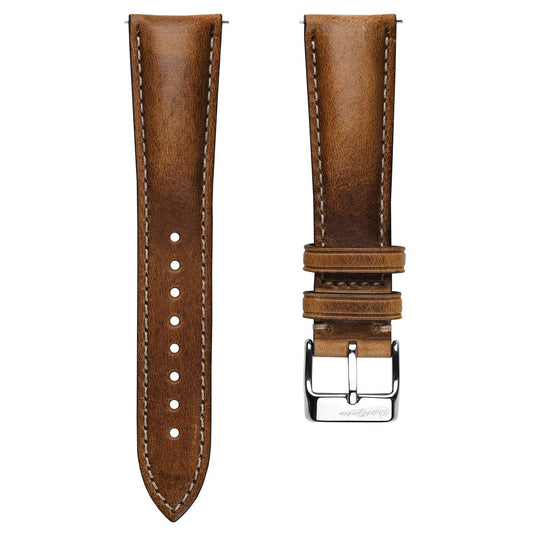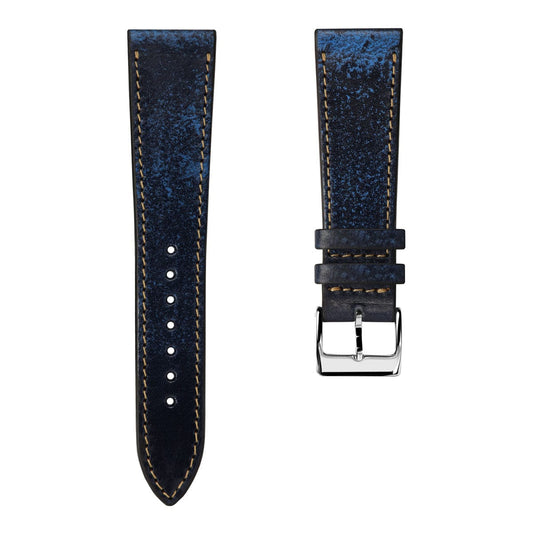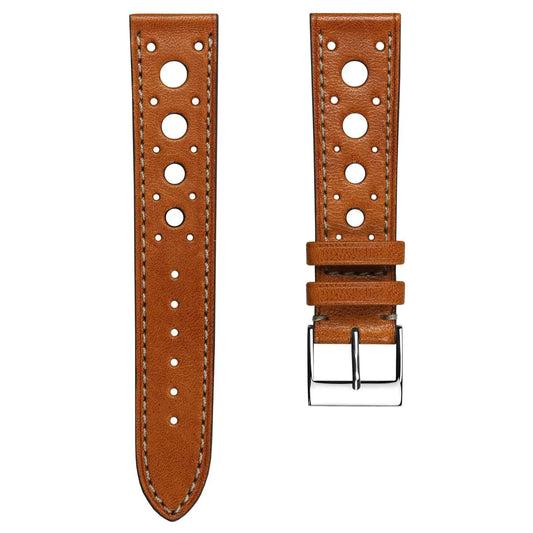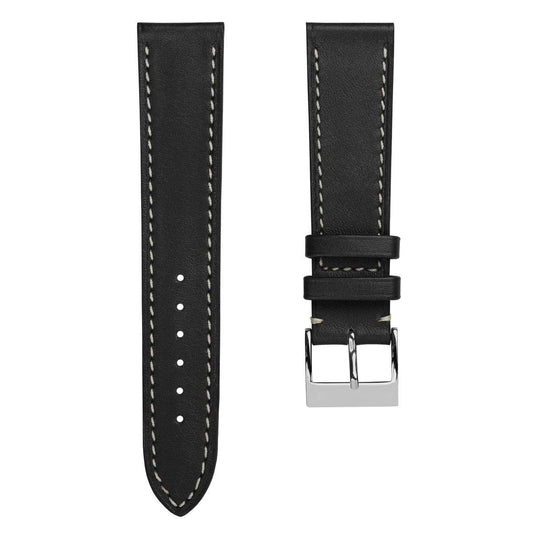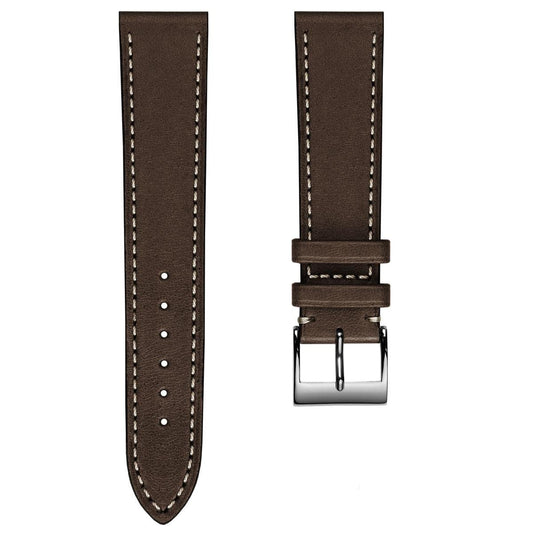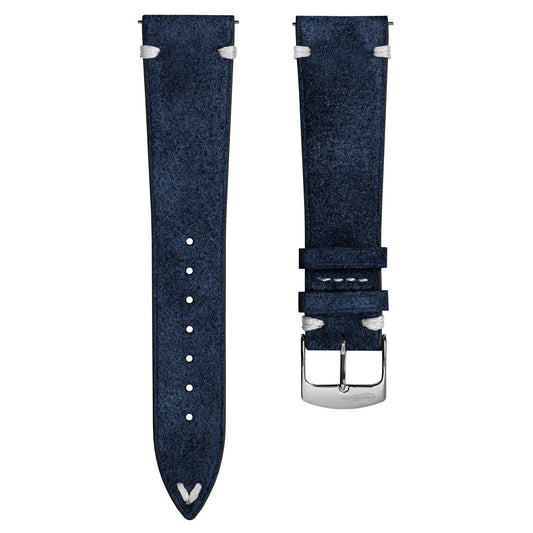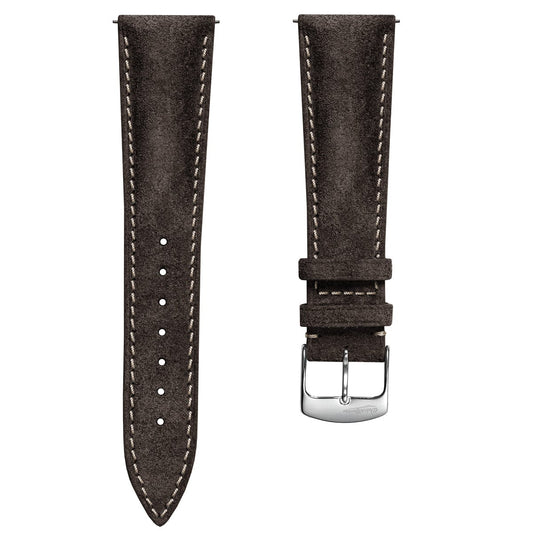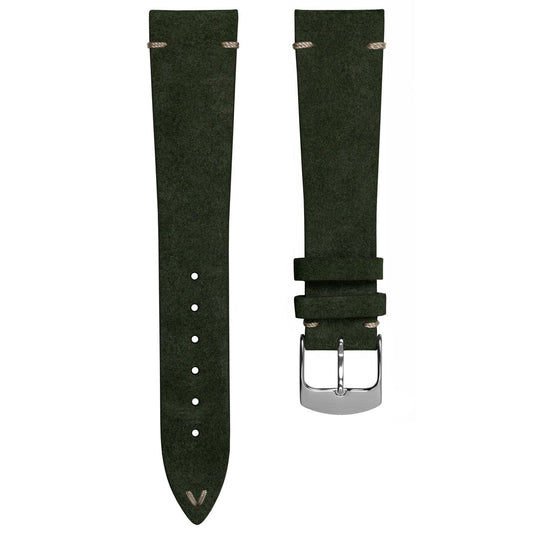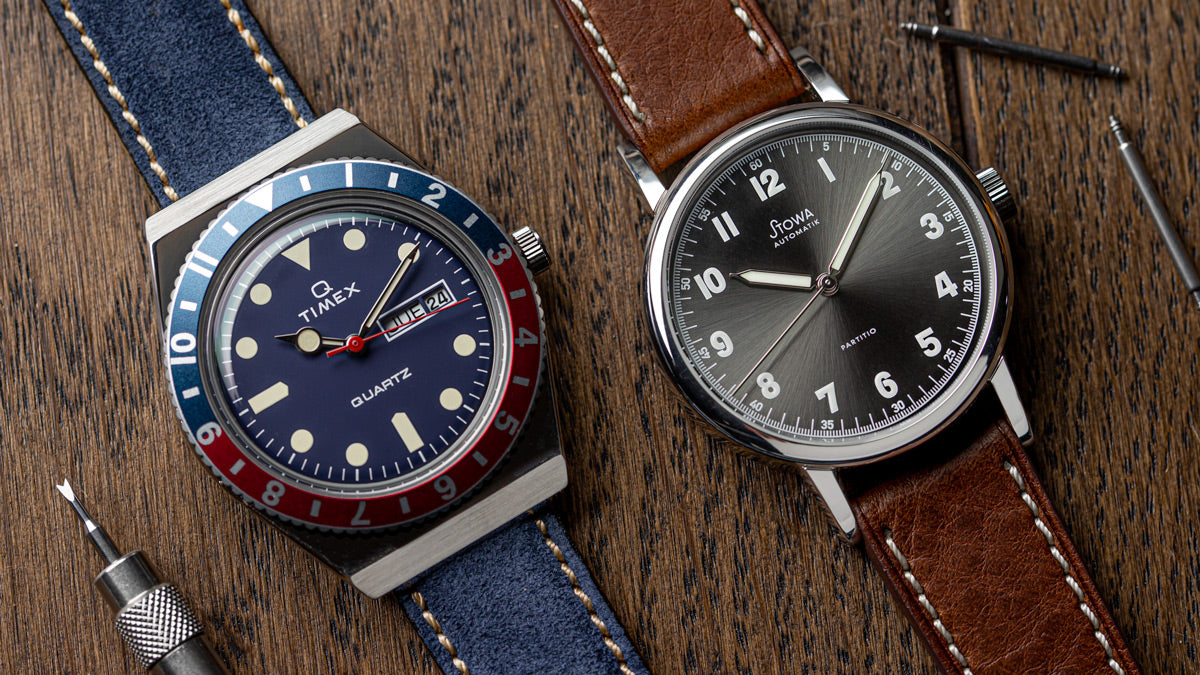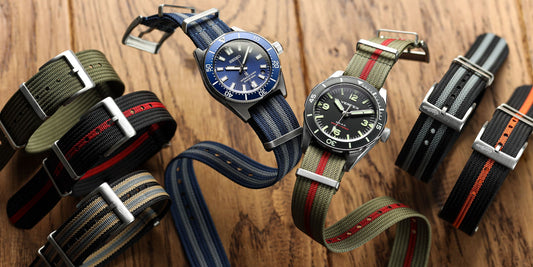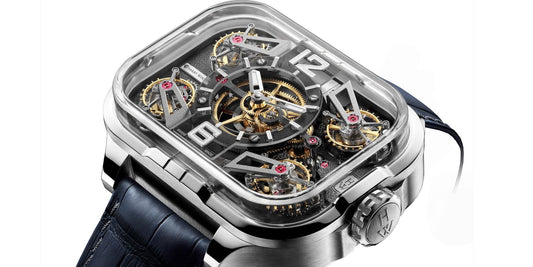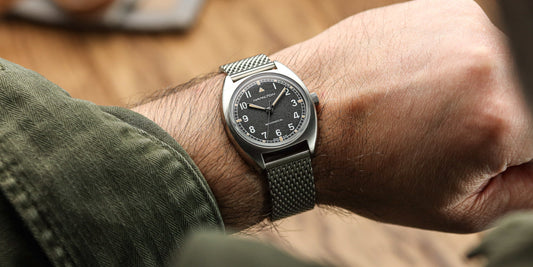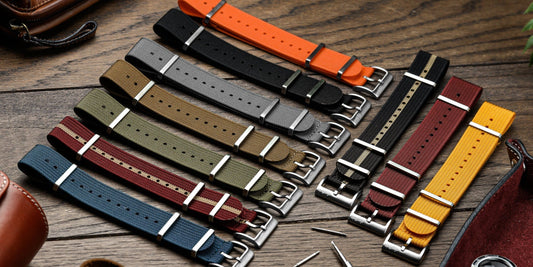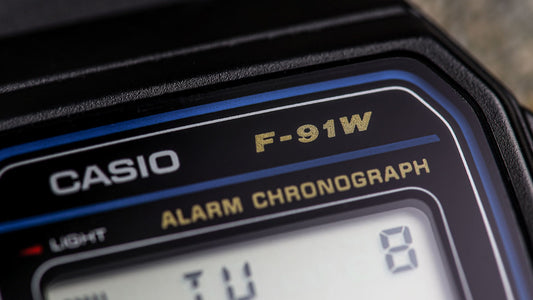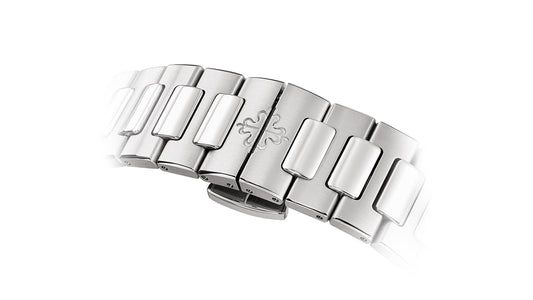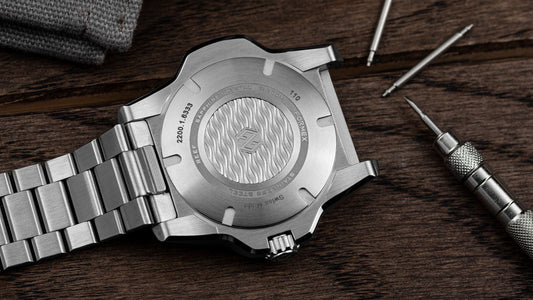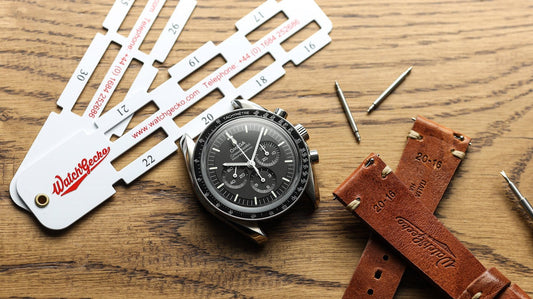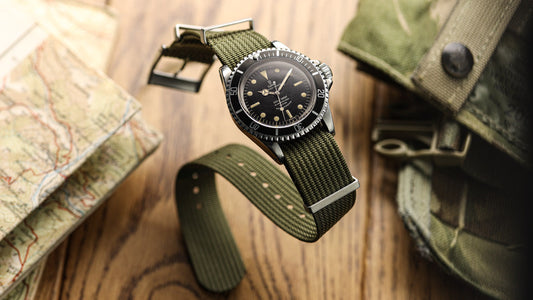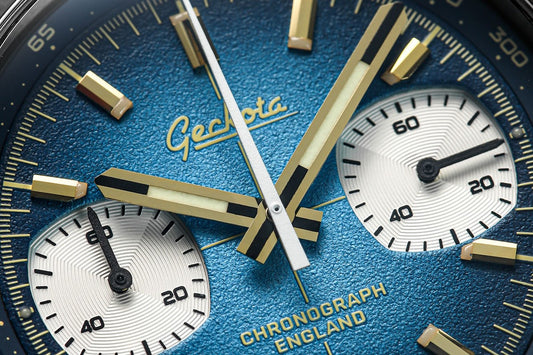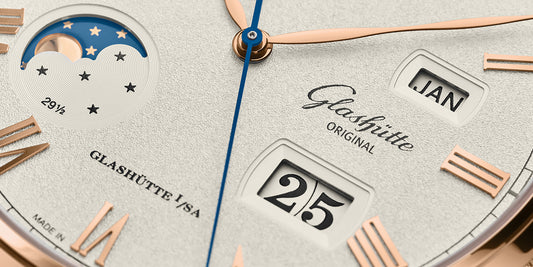In this article we explore odd lug width sizes and options for replacement straps or bracelets when you want a change from your watch brand’s standard 19 mm or 21 mm strap…
First the Basics:
- You can find plenty of aftermarket straps and bracelets off the shelf for watches with 19 mm and 21 mm lug widths (and other odd sizes).
- Custom-made straps are another option –but not for bracelets.
- Alternatively, go 1 mm wider with your leather strap size, to 20 mm (for 19 mm lug width) or 22 mm (for 21 mm).
- Lastly, don’t miss your dream watch because of its ‘odd’ lug width.
- All you need do now is view our great selection of 19 mm and 21 mm straps.
But before you do, did you ever wonder why odd lug widths exist?
Over a century ago, around the time of WWI, a contemporary wristlet might have had a 12 mm strap. Since then, with gradually increasing watch sizes superimposed on variations in fashionable watch sizes, watch strap widths have grown.
By the 1960s and 1970s, 18 mm, 19 mm and 20 mm were typical for watches such as the original Edox Delphin, Universal Genève Polerouter Super and Heuer Autavia Ref. 1163 respectively. At least one forum participant notes that 19 mm equates to ¾ Inch Imperial – perfect for North American markets of the time.
Lug widths: What's Normal?
But what’s normal or standard for lug widths?
Do ‘standard’ lug widths even exist?
Some say that it’s 20 mm or 22 mm, but formal confirmation is elusive. Instead, it seems more fitting to call 20 mm and 22 mm the norm of recent lug width sizing. They’re arguably the most popular widths for men’s straps and bracelets, with 20 mm regularly considered the most widespread.
Increasing watch case sizes
Even if watch case extremes of the 2000s have been reined in, many decades have revealed a clear trend toward larger watches and correspondingly sized straps. Today’s core of available strap sizes extends from 18 mm to 24 mm, but not every change is up. At Baselworld 2018, Breitling launched the Navitimer 8 and reduced the lug width for the 41 mm cases to 21 mm. This compares to 22 mm and 24 mm lug widths on classic Navitimers such as the Navitimer 01 (46 mm) and Navitimer GMT with 46 mm and 48 mm case diameters respectively.
The choice of 21 mm lug width for the Navitimer 8 neatly introduces the oft-opined notion that 19 mm and 21 mm lug widths are odd in more than just millimetric terms.
The Odd vs Even Lug Width Debate
We can look at this in a couple of ways. From one angle, there’s the argument that if watch straps range widely from 18 mm to 24 mm (and beyond), why not have straps and lug widths for every available width?
Is it about protecting brands’ own accessories?
A widely-held view is that watch brands perpetuate odd-size lug widths to individualise product, limit aftermarket strap choices and protect their own signed accessory straps with odd lug widths. However, my understanding is that many luxury watch buyers choose signed straps and bracelets for the branding that matches their luxury watch. This appears to undermine the odd lug width argument.I can see the appeal of arguments about cynical restriction of watch buyers’ choices. However, I wonder how important lug width really is for protecting sales of signed aftermarket straps and bracelets – especially when many brands don’t offer these. Look at Breitling’s strap and bracelet collection with widths from 16 mm to 26 mm – not exactly a range built around a couple of odd sizes!
Maybe other factors are at work. Let’s revisit the likelihood of customers actually wanting to buy alternative straps. And the idea that many luxury watch buyers don’t replace OEM straps with unbranded aftermarket product.
‘Change the look of your Breitling’

Breitling BlackBird - Image Credit: WatchGecko Online Magazine
I’m sure brands have researched this. For the rest of us, accessory searches on brand websites give clues. For instance, Omega and Breitling (‘Change the look of your Breitling with a new strap’) offer accessory strap ranges. Compare this with Citizen, or Swatch Group’s Tissot, who offer ’odd lug width’ watches but not the branded accessory straps to complement them.
One forum contributor took the Tissot accessory hunt further through an AD. Seemingly, the only way to get Tissot-signed straps is as spares for watches they were factory-fitted to. Theoretically, you could buy a different strap, with a lug width to suit your watch, as a spares order for another Tissot model with identical lug width. That’s a complicated way to get a second branded strap and suggests Tissot aren’t chasing strap business. Maybe their research shows that few buyers of Switzerland’s domestic top-selling brand want to change the standard strap. This doesn’t sit comfortably with the argument about brands using odd lug widths to stop watch buyers going elsewhere.
Surely, if sophisticated brands really want to dissuade us from buying ‘indie’ straps, they’d offer their own? Maybe they know how few new-watch buyers actually experiment with non-OE straps. Or perhaps, despite many people’s beliefs, they aren’t trying to do this at all. Read on for another theory about odd lug widths.
Lug widths and watch case diameters

Yema Superman - Image Credit: WatchGecko Online Magazine
Though contrary to ‘don’t let the truth get in the way of a good conspiracy theory’, the less sensational notion that strap (lug) widths are simply design choices related to case diameters seems more likely.
This isn’t where watch designers call on the fabled golden proportion (1:1.618). Instead, the ‘magic’ relationship involves a strap width half the watch case diameter or slightly larger. In other words, when the ratio is 2:1 – like the Certina DS Action Powermatic 80’s 42 mm/21 mm – or less. Should we be surprised, given that designer Del Coates says that 1:1, the golden proportion and 2:1 are the most appealing proportions to most people? Certainly, all three offer plenty of the objective concinnity that watch designers pursue when proportioning timepieces. Then, just to add more variables, there’s the effect of lug size and shape, diameter of the hour markers circle, and the presence of bezels and chapter rings. Even the different effect of metal bracelets or leather straps can influence perceived visual balance.
Proliferation of high-quality independent straps and bracelets from off-the shelf and custom suppliers won’t have gone unnoticed by watch brands. I can’t say that no brand ever thought unusual strap widths might help accessory sales. But I’d suggest that other factors may be more important when brands do offer accessory ranges. Not least, that buying Breitling’s strap for your SuperOcean Heritage brings the cachet of brand signing to complement that of the watch itself. Besides, if you can afford a luxury watch you can afford their premium-priced, authentically-signed, aftermarket strap to match it.
Basic design decisions
So, if odd-sized lug width isn’t the main driver for sales of signed accessories, maybe it’s more about basic design decisions and matching strap widths to watch sizes. And how, as the range of dimensional influences increased over the years, a growing palette of lug width choices became available to designers.Besides, if brands really want to be different, why not create intermediate sizes – and matching accessory straps –such as 21.5 mm, 22.5 mm or even the 23.5 mm, which Gucci put on their YA101312 101 Series. Let’s not get into proprietary strap and bracelet attachments. It’s not a new phenomenon either, as my 1970s Bucherer proves with its 11 mm lug width and 23 mm ‘at lug’ bracelet width!
The designer’s view
For another opinion, I asked designer-typographer, Uchi Clothing owner and Geckota brand ambassador Michael Langley for his thoughts on odd lug widths:
‘I'd tend to lean on the aesthetics of the proportions reason. Maybe 20 mm lugs looked too big or 18 mm too small when the watch was designed. I’ve noticed lots of videos where complaints about lug width are for practical reasons of not being able to switch straps. I've seen fewer reviews where the lug-width complaint is that it clearly doesn't suit the case size. The 50 per cent convention seems just practical as this appears to be the most comfortable and practical format for strapping a dial around a wrist. I think there are subtleties too: the Omega Speedmaster started with 19 mm straight lugs but now has 20 mm twisted lugs with 39.7 mm diameter. The 19 mm lugs were longer with a case diameter smaller at 38.6 mm (39.7 mm with black bezel). I’d imagine that if the 20 mm twisted lugs were as long without the changed diameter there'd be noticeable imbalance in the watch that might impact its character, but not necessarily its design. As a dress watch the Orient Bambino is often considered too big because of its 43 mm size [with crown] and 21 mm lug width. In this case, my guess is that its size is due to the fashion and trend of watches at that time and a 22 mm or 20 mm lug width might hinder the watch's visual balance – and therefore its character. ‘
Where are we now?
The discussion continues and probably always will as long as a full range of odd and even lug widths remains in use – which it surely will, because of the historical legacy of watches designed to-date.
The debate should be set against the background of a marketplace where independent strap and bracelet suppliers have multiplied over recent decades. It’s happened in a way that would have been beyond comprehension in the 1960s and 1970s when, in any case, anecdotal evidence suggests even less swapping-out of watch straps.
Even if we only go back to the 1950s, we’ve amassed a pool of watch designers using their skill, judgement, influences and an evolving heritage of watch sizes to match case dimensions to lug widths. It’s no surprise then, that every odd and even lug-width between 18 mm and 24 mm has been used at some point. Just as designers deploy different materials, shapes, colours and textures, so they can draw on these lug widths. And a few more too, when one considers the likes of Festina’s F16235/6 with its imposing 28 mm interhorn width.
Back to the advice on odd sized lug widths

Mitch Mason - Image Credit: WatchGecko Online Magazine
As mentioned earlier, watch wearers have probably never had such a wide choice of straps and – to a lesser extent – bracelets for odd lug widths such as 19 mm and 21 mm. Whether it’s off-the-shelf from Geckota, custom-made, or from watch brands’ own signed accessory collections, a short web search should deliver something for all tastes.
Importantly, strap manufacturers and retailers have both recognised the demand for straps with odd-size lug widths and are responding to this opportunity. This bodes well if you want alternatives to, say, the 21 mm strap on an Omega Seamaster 300 Master Co-Axial, Seiko SNA411 ‘Flightmaster’, ORIS Carl Brashear 01-733-7720-3185 or IWC Pilot’s Watch Chronograph Edition ‘Le Petit Prince’.
Try a 1 mm wider watch strap

Universal Geneve Polerouter - Image Credit: WatchGecko Online Magazine
Another recognised way to increase your strap choice (but not metal bracelets!) is to go up a size. Never size down; it looks wrong – except if you’re James Bond and it’s the military style strap on your Rolex Submariner 6538 – and increases the risk of ‘popping’ spring bars and dropping your watch. From experience with Certina’s DS Action diver and WatchGecko’s Contoured Handmade Italian Leather Watch Strap, over-sizing a supple leather strap by one millimetre really can work.
And finally, whether it’s a classic Universal Genève with 19 mm lug width, Zenith’s El Primero (21 mm), or a Citizen Eco-Drive Promaster Pilot GMT (23 mm), don’t miss your dream watch just because of its odd sized lug width.
If you adore that timepiece, trust me, you’ll find a way to add extra straps to complement it.



